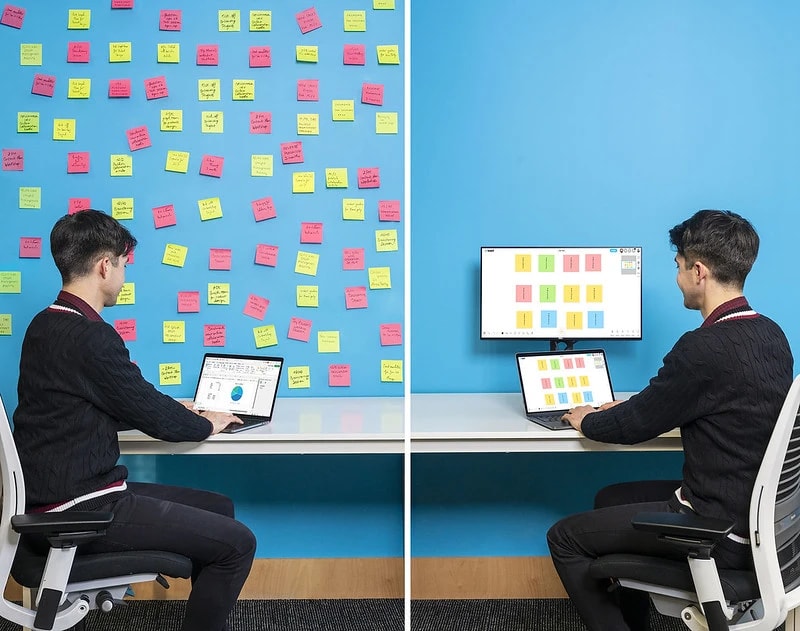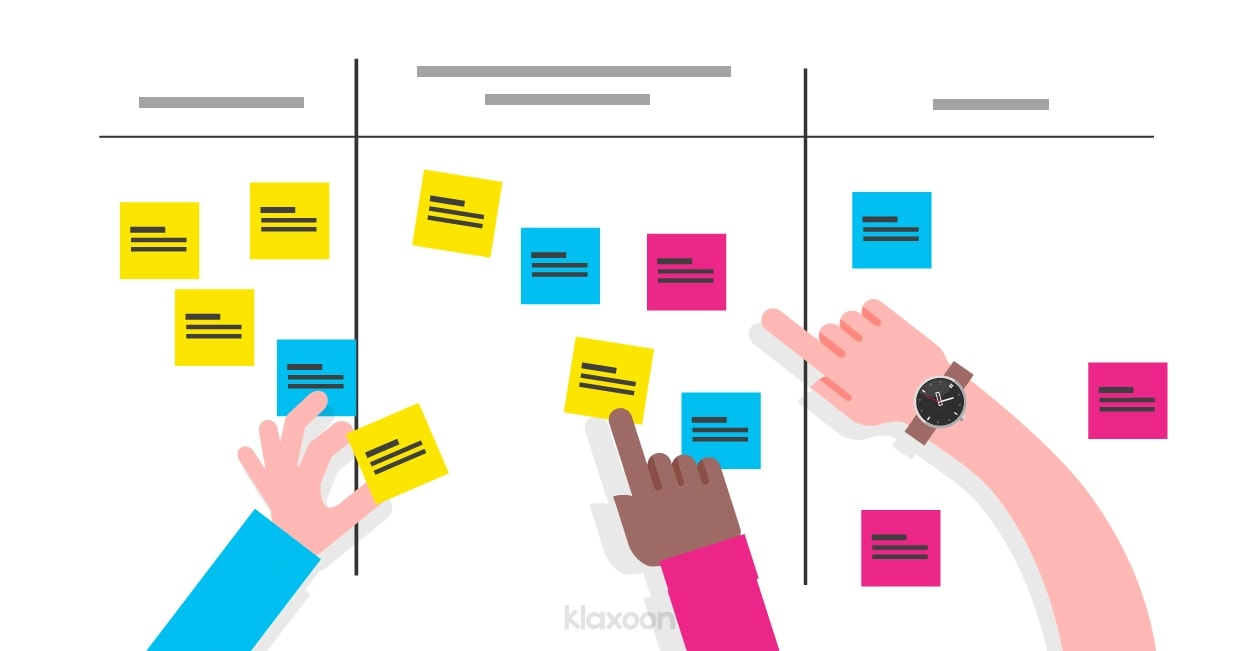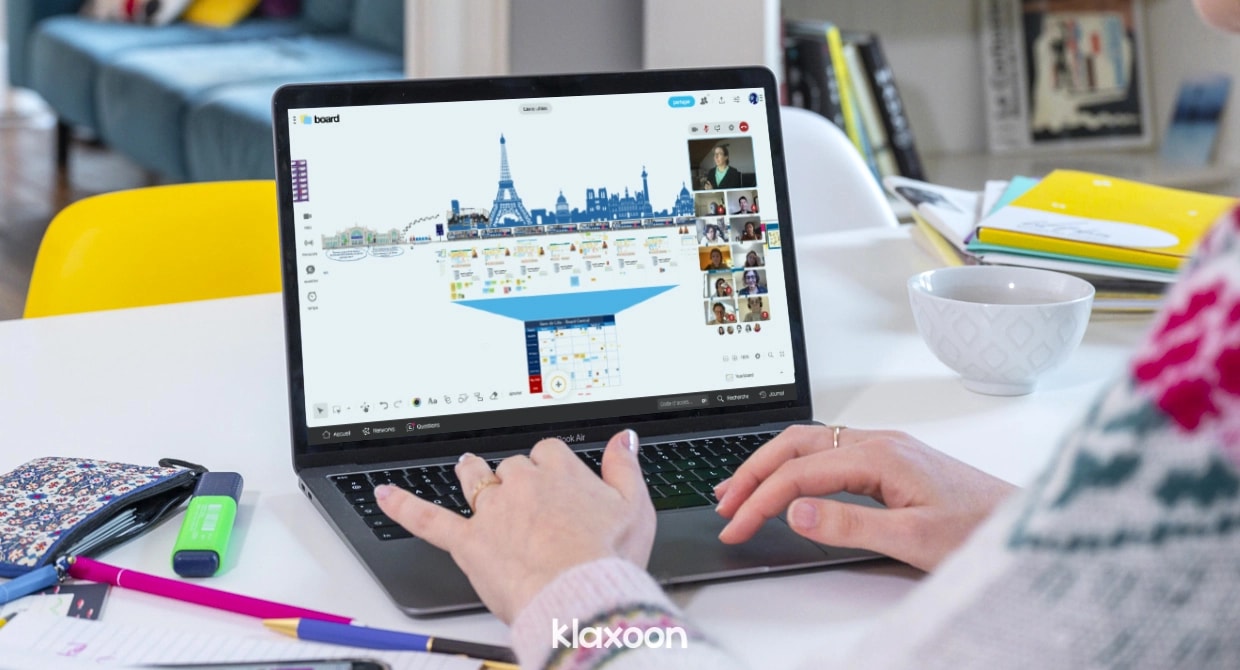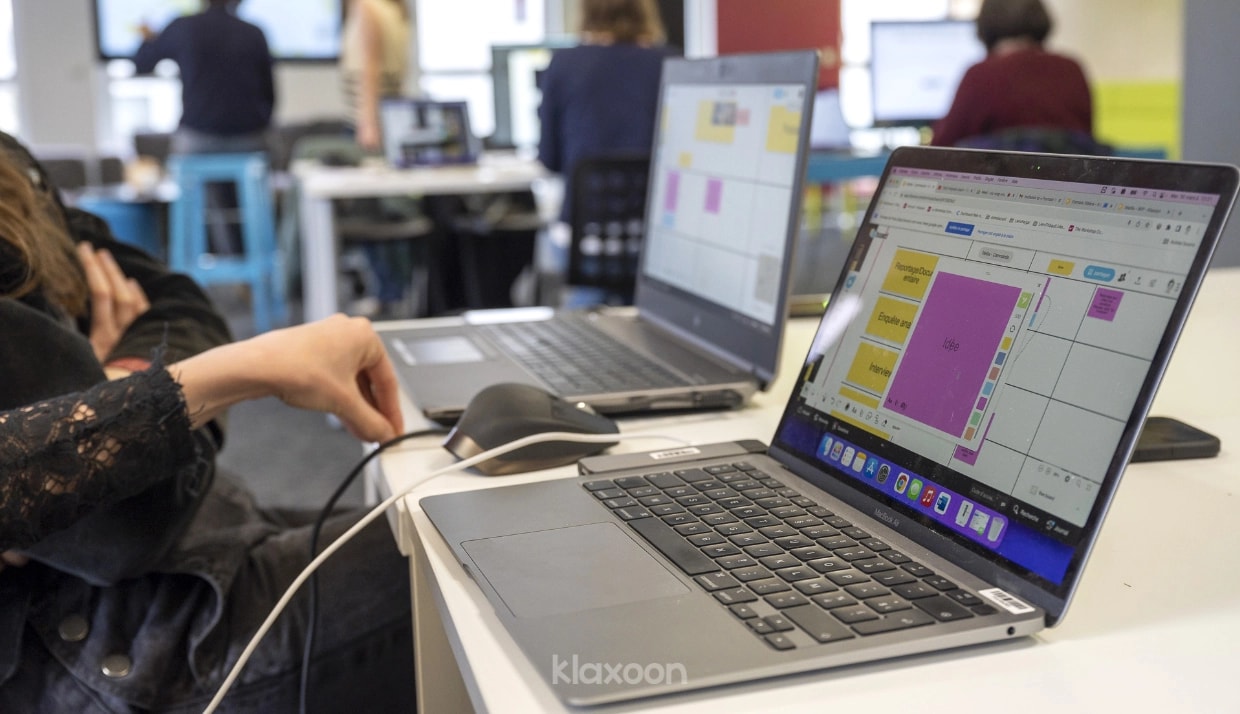A user guide to digitizing your agile practices
Published on February 14, 2025
A user guide to digitizing your agile practices
Now that hybrid work is becoming more commonplace in companies, the agile ceremonies in place must adapt to this new way of working. More effective and engaging, the hybrid version of these agile practices also represents an opportunity: it's easy to scale these methods and get every team using them.
94% of companies are already big fans of agile methodologies. This is one of the findings of the Digital.ai 15th State of Agile Report in 2021. Indeed, in just over two decades, the principles of the Agile Manifesto have been embraced. They are no longer just the reserve of company IT managers, in accordance with the principle that individuals and their interactions are more important than processes and tools.


No more walls full of sticky notes, everything is on hand when it's digital.
Over time, nearly every company has changed the way they work from cascade project management and the traditional V-model, to adopting agile methods, such as Scrum and SAFe. A significant development that involves organizations having to undergo profound transformation. Especially since some of these methods require meticulous organization. Agile ceremonies have become the norm. Stand-up meetings, dashboards, and sticky notes have become usual things in the workplace.
Take the example of SAFe and its PI Planning (PIP) ceremony, a rigorous framework. This is a very complex ceremony that can involve up to 150 people. And the objectives are ambitious because they call for collaboration and coordination to produce a quarterly roadmap together. This highly strategic process usually takes place over two days in person. One of the most widely used agile methods in business, SAFe contributed to the spread of scaled agility, in the 2010s.


Before, we used to process agile ceremonies on physical boards on the wall.
And then, this well-oiled machine came to a standstill. Due to the global pandemic, no one could go to on-site meetings any longer. So, what could we do? Should we abandon a proven method, adopted by more than 20,000 companies around the world and practiced by more than a million agilists?
For some, the in-person vs. remote debate is outdated. For those who have read the Agile Manifesto, it’s got nothing to do with in-person or remote working, given the principles and values it defends. Just to remind you, its 4 core values are as follows:
All these concepts highlight collaboration, uses, flexibility and adaptability. And these terms can also be applied to the principles of hybrid work. So obviously, it is possible to be agile while working remotely, on site, or both.
In general, it’s essential to tackle transformation together, to adapt agile ceremonies to a hybrid work model, regardless of the size of the organization. Here is an example to prove it, thanks to the SAFe method.
Jérôme Rajkovic is an agile coach at Inetum, an IT services company that operates in 26 countries with nearly 27,000 employees. And he has already practiced PI Planning with hundreds of clients. Despite the pandemic, he was able to keep his agile ceremonies going even though the majority of contributors were confined to their homes. But how?
First, by relying on co-creation and adopting a new way of working. "We had to align all the teams, get them coordinated and help them adhere to the strategic vision. We had long been accustomed to coaching our clients and our teams on site. But we were able to evolve, to adapt to the climate. Today, we can alternate between fully remote or mixed ways of working." To do this, Jérôme has endeavored to recreate the conditions of an on-site workshop, mainly by creating fun and enjoyable virtual atmospheres in which to evolve.
With Klaxoon, we can improve PI Planning ceremonies by making them theme-based. For example, with a client in Lille, we created a whole PIP ceremony based on the theme of the annual Lille street market. This has created a unique user experience. And this is all the more important when working remotely. If the theme is engaging, you can get participants on board. It feels like a meeting room experience.


It’s easy to reproduce physical interactions with the right tools. And it allows everyone to have fun, too!
In practice, Jerome has digitized all his PI Planning process using Board, Klaxoon’s virtual whiteboard. On Board, all discussions take place using visual management. Everything is visible on the Board, which makes it easier for all those present to grasp. They can also send their ideas easily, even remotely, and see those of others.
Most importantly, the major stages of PI Planning can be reproduced on the Board, without losing any information or being less efficient. When the teams are split into subgroups, it’s very simple to represent a virtual table on Board, where these subgroups can meet and discuss using the built-in videoconferencing tool. People can be split up in a highly visual way, across the entire Board. And there is no limit to who can attend, which is a big plus when it comes to organizing PI Planning with more than 100 people.
To facilitate interactions, a central table is created to be used as the final deliverable. All subgroup spaces are placed visually around the table, just as they would be in person.
All the teams work on the same Board, in the same way, so that there is a common color code for ideas submitted by everyone, and the same goes for categories and dimensions. This means everyone can understand everything easily.
Similarly, the interactions between teams, debriefings and milestones, which are part of any PI Planning ceremony, are organized on the Board, in specific spaces.
Just use the Question tool to clarify a point or make a joint decision. The written format means that even the shyest people can express themselves, and ell your team discussions are concrete and fact-based.
Thanks to Klaxoon, Jérôme is able to recreate the conditions of a live discussion where everyone can express their point of view, even when working miles away. And this stands as one of the key ways to encourage engagement in a workshop.
Digitizing agile ceremonies makes it easy for everyone to adopt them, even with a ceremony as complex as PI Planning. Here is an analysis shared by Jérome Rajkovic: "At the end of the presentations, we get the people to interact, based on the characters in the Mr. Men & Little Miss collection (Roger Hargreaves) to ask the participants how they’re feeling. At the end of each sequence, people are asked to like some pictures to check if they have understood correctly and if they feel at ease with the content presented. We get their feedback after each slide, and check that everything is heading in the right direction." Quantifying the data, collecting this feedback in the form of likes also makes it possible to ensure that teams are engaged and satisfied.
At the end of ceremonies, summing it up is also made easy with Board, which remains accessible to everyone at all times. You can just go back to your Board to see all the ideas submitted by the team. No need for a report, everything is available because all the discussions are fact-based.
With the time they manage to save this way, teams can talk about topics they were not able to tackle and explore further before: complex problem solving, brainstorming, innovation etc.
Any project management methodology, be it agile or traditional, is based on a simple assumption: people know how to talk to each other to get coordinated, and move in the same direction. But how do they do it remotely? You’ve no doubt heard it said that in IT the problem lies in the chair-to-keyboard interface. The problem is always about the human side, your end user. So, what are the solutions? Collaboration and participation.


The only obstacle to digitizing your practices is you.
The success of PIP with Klaxoon can be extended to all your agile ceremonies. Statements of needs, sprint reviews, retrospectives - all these recurring ceremonies are now made easy with the hybrid work model, on site or when working remotely, meeting together or asynchronously.
In Klaxoon's template library, you can find ready-to-use templates for all your agile ceremonies, such as:
You can also find Product Backlog and Planning Poker templates, and much more in our template library.
Templates make agile methods more user-friendly and accessible to all the team. With these ready-to-use templates, you can accelerate the adoption of proven methods, no matter the level of technical skills, and foster a scaled agile culture throughout your entire organization.
Unlock your teamwork potential